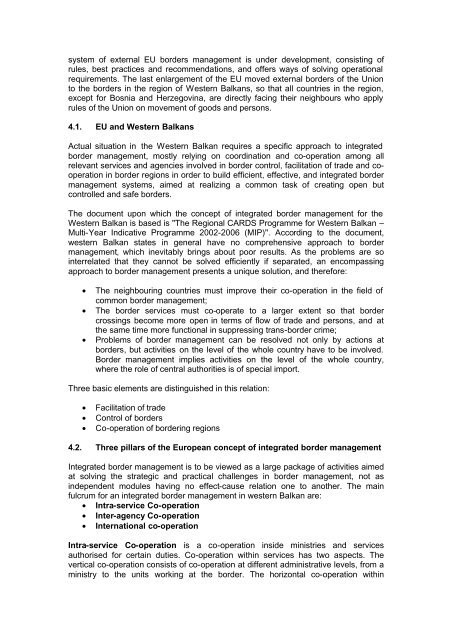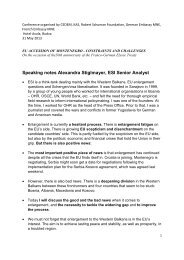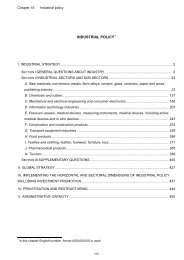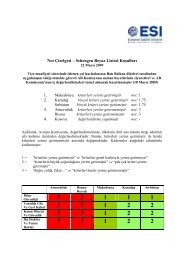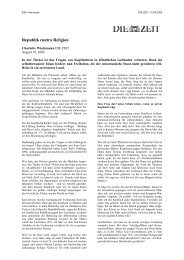Strategy for integrated border management
Strategy for integrated border management
Strategy for integrated border management
You also want an ePaper? Increase the reach of your titles
YUMPU automatically turns print PDFs into web optimized ePapers that Google loves.
system of external EU <strong>border</strong>s <strong>management</strong> is under development, consisting of<br />
rules, best practices and recommendations, and offers ways of solving operational<br />
requirements. The last enlargement of the EU moved external <strong>border</strong>s of the Union<br />
to the <strong>border</strong>s in the region of Western Balkans, so that all countries in the region,<br />
except <strong>for</strong> Bosnia and Herzegovina, are directly facing their neighbours who apply<br />
rules of the Union on movement of goods and persons.<br />
4.1. EU and Western Balkans<br />
Actual situation in the Western Balkan requires a specific approach to <strong>integrated</strong><br />
<strong>border</strong> <strong>management</strong>, mostly relying on coordination and co-operation among all<br />
relevant services and agencies involved in <strong>border</strong> control, facilitation of trade and cooperation<br />
in <strong>border</strong> regions in order to build efficient, effective, and <strong>integrated</strong> <strong>border</strong><br />
<strong>management</strong> systems, aimed at realizing a common task of creating open but<br />
controlled and safe <strong>border</strong>s.<br />
The document upon which the concept of <strong>integrated</strong> <strong>border</strong> <strong>management</strong> <strong>for</strong> the<br />
Western Balkan is based is "The Regional CARDS Programme <strong>for</strong> Western Balkan –<br />
Multi-Year Indicative Programme 2002-2006 (MIP)". According to the document,<br />
western Balkan states in general have no comprehensive approach to <strong>border</strong><br />
<strong>management</strong>, which inevitably brings about poor results. As the problems are so<br />
interrelated that they cannot be solved efficiently if separated, an encompassing<br />
approach to <strong>border</strong> <strong>management</strong> presents a unique solution, and there<strong>for</strong>e:<br />
• The neighbouring countries must improve their co-operation in the field of<br />
common <strong>border</strong> <strong>management</strong>;<br />
• The <strong>border</strong> services must co-operate to a larger extent so that <strong>border</strong><br />
crossings become more open in terms of flow of trade and persons, and at<br />
the same time more functional in suppressing trans-<strong>border</strong> crime;<br />
• Problems of <strong>border</strong> <strong>management</strong> can be resolved not only by actions at<br />
<strong>border</strong>s, but activities on the level of the whole country have to be involved.<br />
Border <strong>management</strong> implies activities on the level of the whole country,<br />
where the role of central authorities is of special import.<br />
Three basic elements are distinguished in this relation:<br />
• Facilitation of trade<br />
• Control of <strong>border</strong>s<br />
• Co-operation of <strong>border</strong>ing regions<br />
4.2. Three pillars of the European concept of <strong>integrated</strong> <strong>border</strong> <strong>management</strong><br />
Integrated <strong>border</strong> <strong>management</strong> is to be viewed as a large package of activities aimed<br />
at solving the strategic and practical challenges in <strong>border</strong> <strong>management</strong>, not as<br />
independent modules having no effect-cause relation one to another. The main<br />
fulcrum <strong>for</strong> an <strong>integrated</strong> <strong>border</strong> <strong>management</strong> in western Balkan are:<br />
• Intra-service Co-operation<br />
• Inter-agency Co-operation<br />
• International co-operation<br />
Intra-service Co-operation is a co-operation inside ministries and services<br />
authorised <strong>for</strong> certain duties. Co-operation within services has two aspects. The<br />
vertical co-operation consists of co-operation at different administrative levels, from a<br />
ministry to the units working at the <strong>border</strong>. The horizontal co-operation within


